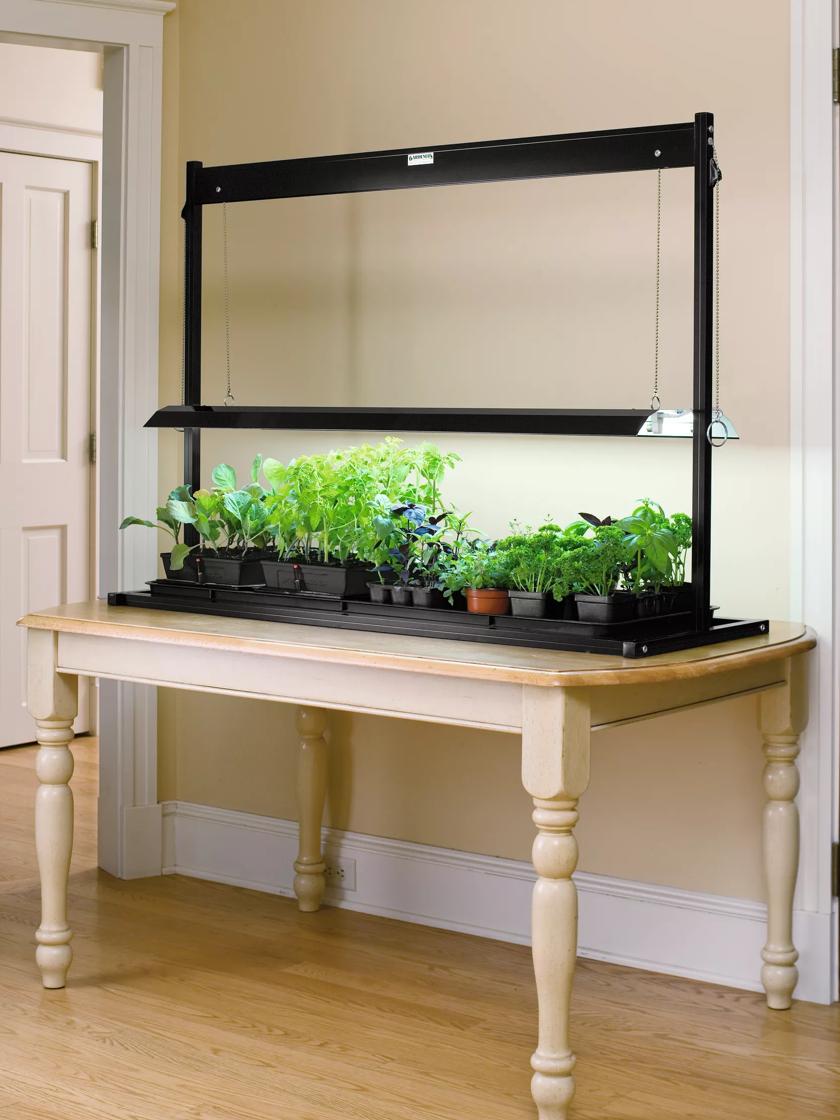Indoor Gardening Under Lights
Many individuals with limited outdoor space are now considering indoor gardening with the aid of artificial lighting. Thanks to modern technology, it is now feasible to create indoor gardens that simulate natural light, providing plants with the light they need. This method can be used to cultivate a variety of vegetables and herbs, and it is available all year round. Cultivating plants under artificial light provides people with endless opportunities to showcase their gardening abilities, regardless of whether they live in a small house or a large backyard.
Before making a decision, it is important to consider the pros and cons of each light source. For example, LED lights are far more energy-efficient than regular lights, resulting in lower energy costs. Furthermore, they are more durable and generate less heat, reducing the risk of plant damage. However, there are drawbacks, such as higher costs and the need for proper cooling to avoid overheating. HID lights, in contrast to LED lighting, have a lower initial cost.
When selecting a light source for a plant, factors such as light intensity and wavelength are taken into account. Each plant requires its own light source, so it is critical to choose the appropriate light source for each individual plant. The size and extent of the growth space must be considered as well. Depending on the size of the area, a different type of light might be required to ensure consistent light distribution. In the long run, light source effectiveness and energy usage will be considered to minimize environmental impact.
It is essential to understand the light intensity and duration required for the plants being grown. This information may be used to create a lighting schedule and select the best light source. Additionally, it is critical to determine the precise placement of the lights to avoid areas of intense brightness and darkness and ensure even light distribution throughout the plants. As plants grow and their lighting needs change, it may be necessary to regularly check and adjust the lights. By providing adequate lighting, these tips can be used to create a beautiful indoor garden.
When it comes to indoor plant growth, herbs like basil, parsley, and mint, as well as leafy greens like kale, spinach, and lettuce, are excellent choices when paired with adequate lighting. These plants are known for their ability to thrive in controlled environments and require less space than other fruit-bearing plants. Additionally, good lighting can be used to grow indoor plants such as African violets and orchids. Each plant must be thoroughly studied to determine its lighting requirements and ensure its effectiveness and success.
The plant you choose must be determined by the intensity of the light and the amount of space you have available. It is also important to consider how much maintenance will be required. Some plants are more resistant to neglect than others and may require more frequent watering or trimming. Also, consider the plant's growth rate and final size, as overcrowding can impede growth and affect overall health. Always choose plants that complement your interior decor and appeal to your sense of smell and aesthetics.
Do You Have A Kitchen Garden?
Best Potting Mix For Container Gardens
Growing Your Own Vegetables In Containers
Grow Potatoes In Containers?
Growing tomatoes in Containers
What To Know About Container Gardening
Links:

No comments:
Post a Comment